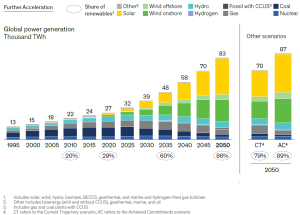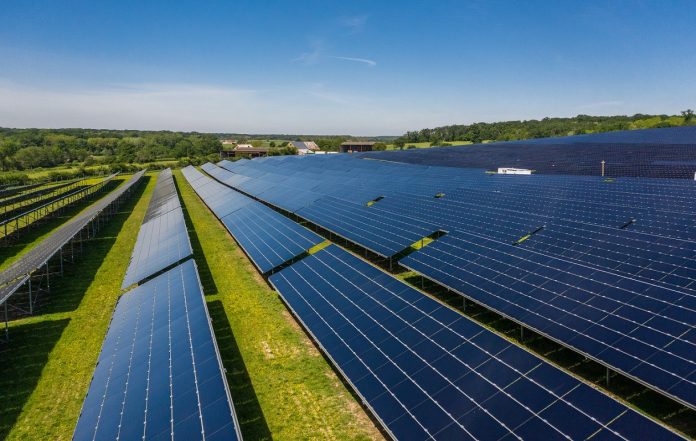Global solar installations are expected to increase five-fold, making up nearly half of all power generation by 2050 as renewables become the “new baseload”.
That is among the conclusions of new report published by analysis company McKinsey, which also concluded that the energy transition will need to be “significantly” accelerated if global warming is to be limited to 1.5 degrees Celsius, with warming currently set to exceed 1.7 degrees.
McKinsey’s Global Energy Perspective 2022 report, published today, has found that despite net zero targets being set by 64 countries, which account for 89% of total CO2 emissions, emissions reductions remain insufficient to limit global warming to within the 1.5 degrees ambition established in the Paris Agreement.
There remains, however, more heartening news from the world’s power sector, which continues to decarbonise. While total investment in energy sectors is set to increase by 4% year-on-year, McKinsey has forecast that these investments will head mainly towards renewables and decarbonization industries, with annual energy supply and generations investments set to double by 2035 to US$1.5 – 1.6 trillion.
By 2030, around half of the world’s power mix will originate from renewables sources, rising again to between 80 – 90% by 2050, most of which will come from solar and onshore wind.
Global solar installations are set to increase by fivefold by 2050, with solar set to become the mainstay of power generation, accounting for 43% by 2050.
 Solar PV will make up to 43% of total power generation by 2050. Image: McKinsey Power Model.
Solar PV will make up to 43% of total power generation by 2050. Image: McKinsey Power Model.
That growth has led McKinsey to conclude that renewables are set to become the “new baseload” of the power sector, with thermal generation shifting to a back-up role to support grid stability. With renewables accelerating, load factors are set to decline from 40% in 2019 to around 28% by 2050, representative of the significant quantities of solar and wind on the system.
As a result, flexible assets such as battery storage are to underpin the 24TW of additional generating capacity set to be added to grids by 2050, with hydrogen also set to play a significant role in grid stability.
Green hydrogen alone is set to account for 28% of power generation by 2050 and will be the main driver for additional power demand growing 42% between 2035-2050 and playing a crucial role in hard-to-abate industries, the report concludes.
Finally, global energy consumption is expected to flatten in the coming decades with an expected growth of 14% by 2050 and with electricity and hydrogen accounting for half of the total energy consumption offsetting fossil fuel lowering by 40% from 2020 to 2050.






